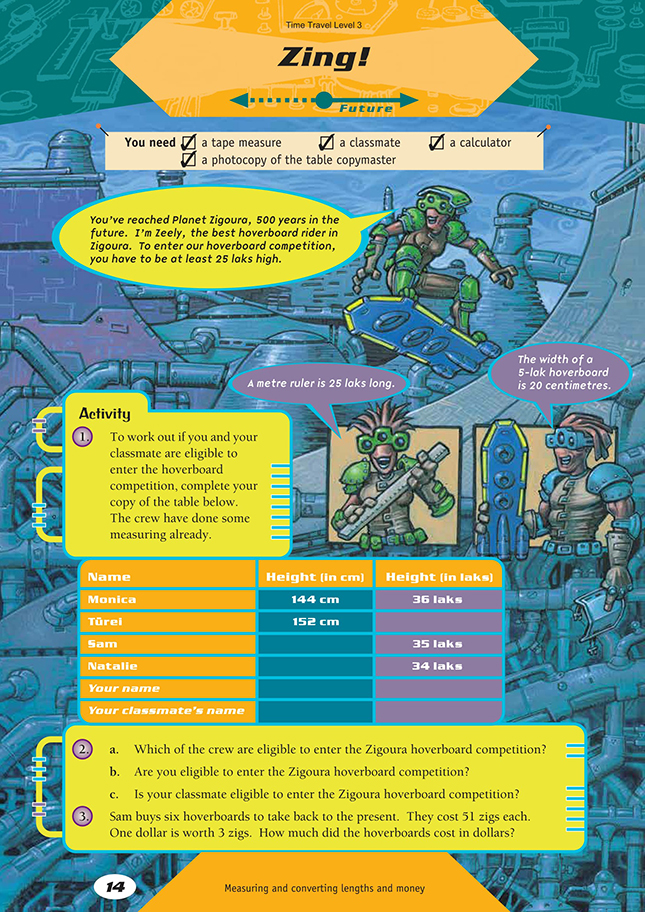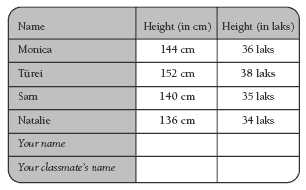This is a level 3 number activity from the Figure It Out theme series.
Click on the image to enlarge it. Click again to close. Download PDF (350 KB)
find the conversion factor
solve conversion problems by multiplying and dividing
A classmate
A tape measure, a calculator
FIO, Level 3, Theme: Time Travel, Zing! page 14
Copymaster of the table
In this activity, the students will use multiplication and division to convert measurements from the units of measurement used on the planet Zigoura to the units of measurement used on Earth.
Remind the students to read the information about converting Zigoura measurement units to our measurement units carefully.
We are told that 25 laks equals 100 centimetres (1 metre) and that 5 laks equals 20 centimetres. While the students at this level aren’t yet working with ratios, they should see that they multiply the number of laks by 4 to get the number of centimetres. Conversely, they divide the centimetres by 4 to get laks. Students who are not confident in multiplying and dividing by 4 might use the strategy of double and double again to convert laks to centimetres and half and half again to convert centimetres to laks.
In question 3, $1 is worth 3 zigs, so the students will multiply the dollars by 3 to get zigs and divide the zigs by 3 to get dollars. Another strategy the students may use to convert zigs into dollars is to express 51 zigs as a combination of numbers that are easily divisible by 3. For example,
51 zigs = 30 zigs + 21 zigs
51 zigs = $(30 ÷ 3) + $(21 ÷ 3)
= $10 + $7
51 zigs = $17
Using a double number line is another useful strategy to help the students solve this problem:
Make sure that the students then multiply the $17 by 6 to get the cost in dollars of six hoverboards.
Answers to Activity
1.
2. a. All of the crew are eligible to enter the Zigoura hoverboard competition.
b. Answers will vary.
c. Answers will vary.
3. $102 altogether (or $17 each)


